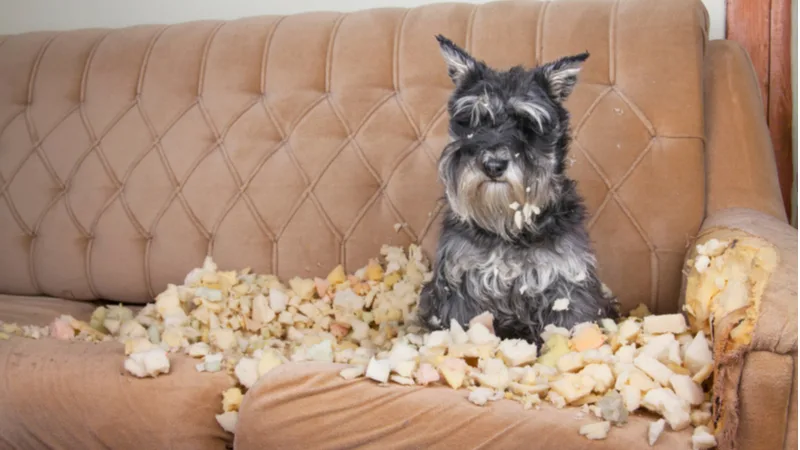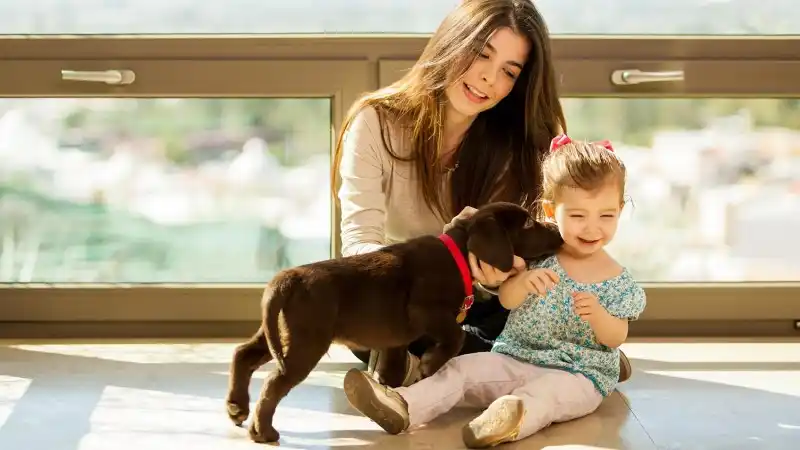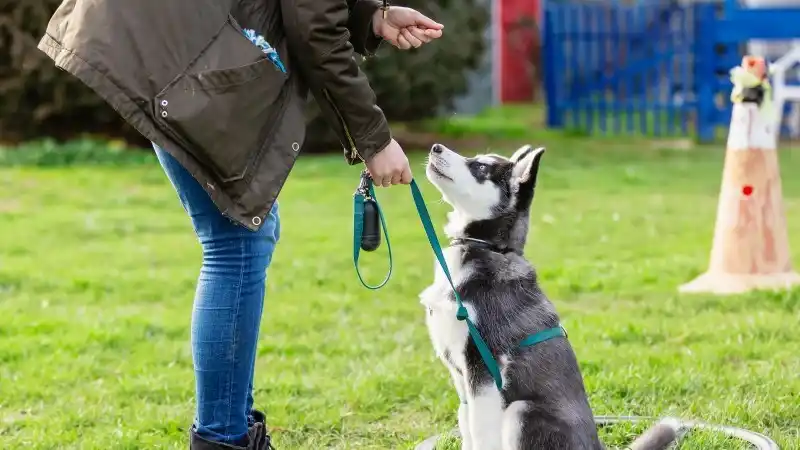What to Do if My Dog Eats Everything
Does your dog eat everything in sight? Explore the potential causes for this destructive behavior (such as teething & stress) and ways you can solve the problem.

Does your dog eat everything they can sink their teeth into?
Some dogs can’t seem to stop themselves from chewing everything from shoes to plush toys. Chewing is often a sign of teething for puppies, and for other dogs, it’s a sure sign of boredom or stress.
Do you know which problem you're up against with your dog?
If you’re like most pet owners, you want to know why your dog eats everything in sight and what you can do about it. You might wonder if this is a stage every dog goes through or normal for their breed. If so, how long do these stages last, and what can you do to keep your dog from destroying your furniture or eating something dangerous?
The first thing to understand is that there are a variety of reasons why any dog would eat everything within reach. The factors, however, all depend on your dog.
How old is your pup?
What’s their activity level?
Are they a high-energy breed? If so, they might need a lifestyle to match their liveliness.
On a positive note, chewing is instinctual for dogs. Canines tend to explore the world with their mouths, making chewing a natural part of their lives. However, if your dog is chewing up your house and belongings, your first step to solving the problem is managing your pup’s access to off-limit items.
You might also want to see things from your dog’s perspective.
Consider Your Dog’s Point of View
Imagine this scenario, you come home after a hard day to find white, fluffy stuffing covering your living room floor. It’s absolutely everywhere! Your dog is sitting in the middle of the cottony filling wearing a look of pure joy. The look says it all: It’s so much fun ripping open couch cushions!
Or maybe your dog is the less dramatic type that likes to chew on shoes, sunglasses, and cords.
First of all, remember that your dog isn’t willfully destroying your home. They don’t have the same reference points as you, and they don’t give the same value to items like shoes and couches. Instead, they live in the moment and follow their noses.
If It’s Not Food, Why Do Dogs Eat It?
Picais a common disorder in dogs that makes them crave and eat non-food items like sand, socks, shoes, and toys. This disorder can stem from boredom or depression.
Another concern is that ingestion of foreign objects can create a blockage in your dog’s gastrointestinal tract. This is a grave issue, often leading to surgery, which can be costly if you’re uninsured. Find out more about AKC Pet Insurance’s Accident and Illness coverage here (coverage is underwritten by Independence American Insurance Company).
How to Prevent Your Dog from Destroying Your House
Solving issues related to canine destructiveness all depends on your dog’s age and activity level. Training and “household management” can help.
Here are some questions to consider:
Is Your Dog Teething?
If your dog is a puppy, they may be teething. Teething in dogs can cause them to seek out activities that will bring relief to sore gums as their adult teeth come in. You can offer pup-safe teething rings and soft chew toys as an alternative to off-limit items. Then, remove shoes, cords, and other small objects from your dog’s vicinity.
Some pet owners crate-train their dogs or put them in a playpen, which stops them from having free range of the home. Managing your dog’s access goes a long way toward preventing a nonstop chewfest.
Does Your Dog Understand Commands?
Dog trainers emphatically recommend teaching your dog the “Leave it” and “Come” commands, as well as rewarding them when they comply. It enhances the bond between you and your pet and acts as a safety measure. After your dog has been trained to recognize the command and expect a treat, you can call “Leave it,” and they’ll know that dropping a bland object like a shoe or cushion will result in them getting a far tastier treat.
Safety is another advantage of the “Leave It” and “Recall” commands. For example, if your dog is off-leash outside, you can use commands to stop them from chasing squirrels into traffic.
Are You Providing Mental Stimulation for Your Dog?
Some dogs eat because they’re bored. Active breeds like Border Collies and Labs need to run miles daily to burn off energy. No matter the breed, every dog needs mental stimulation every day. It can be as simple as a game of fetch, learning agility, or playing with interactive dog puzzles.
Is Your Dog Stressed?
Stressed or depressed dogs often develop destructive behavioral habits. If dog stress is the culprit, try taking your pup out for a long walk every day or enrolling them in doggy daycare so they can socialize with other dogs and play in a new environment.
Do You Punish Your Dog?
Intimidation and punishment will only make a problem worse. Dogs learn by positive reinforcement methods. Tuck away shoes and other small items to keep them out of your dog’s reach. Offer treats and praise when your pup does what you want them to.
Is Your Dog Suffering from a Medical Condition?
Is constant chewing a new behavior? It’s possible that your dog has a gut or digestive issue. You can speak to your vet to rule out any medical problems.
Conclusion: Chewing Everything Is a Symptom
Identify what’s going on with your dog and let that guide your next steps. If your dog is a puppy, puppy teething rings and confinement will help. If your dog is older, then make a plan to give your dog more attention and daily exercise. Your veterinarian can help rule out medical concerns.
Take some of the stress out of pet ownership with Accident & Illness Coverage from AKC Pet Insurance (underwritten by Independence American Insurance Company). Our pet insurance plans are designed to be there when you need them, allowing you to focus more on the health of your pet and less on costly veterinary bills. Click here for a quote today!
A connoisseur of fluffy pups, Jen Phillips April started writing about dog health back in 2005 with a dog treat recipe site. Now she writes for multiple pet brands, veterinarians, and pet tech.
READ MORE ARTICLES

